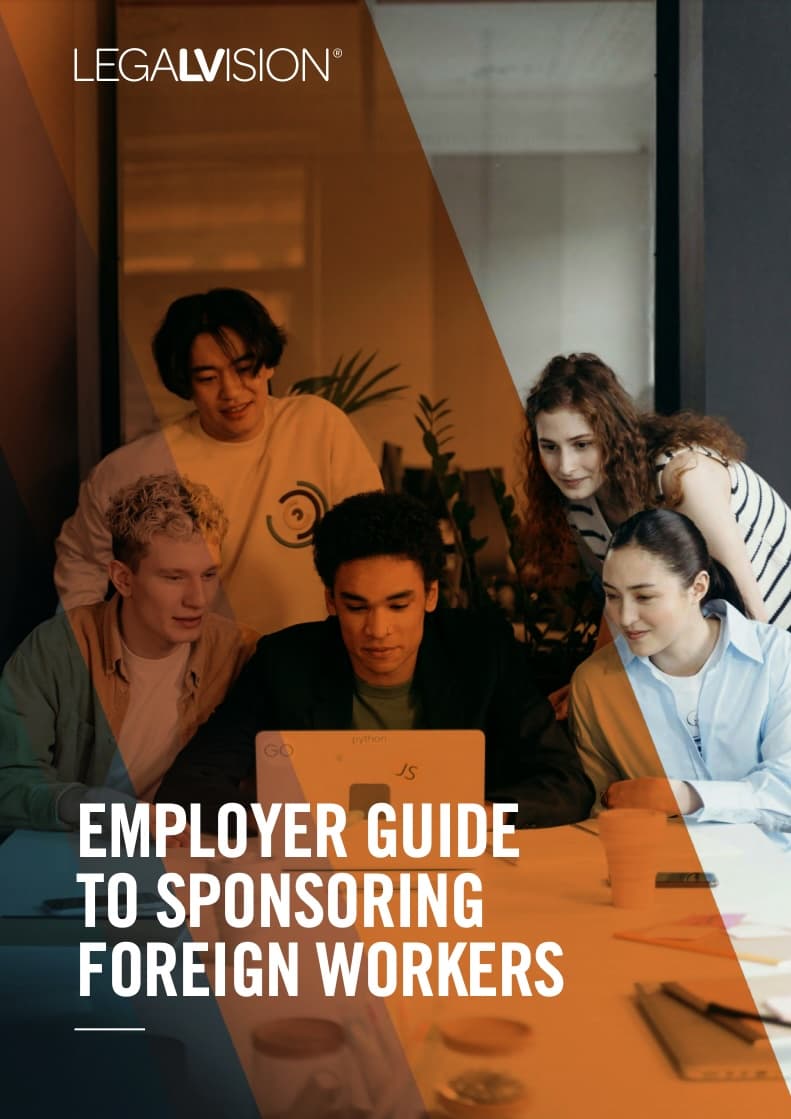Table of Contents
- Resident Return Visa (RRV)
- The Different Types of Resident Return Visas
- You Must Be a Current or Former Australian Permanent Resident
- Subclass 155 or 157?
- Demonstrating Substantial Ties to Australia
- Compelling Reasons for Absence
- Length of Resident Return Visa Validity
- Additional Requirements
- How Do I Apply?
- Key Takeaways
If you are an Australian permanent resident, you have the right to live in Australia indefinitely. However, many permanent residents do not realise that they are subject to specific travel restrictions. When you become an Australian permanent resident, your visa contains a five-year travel facility that allows you to travel to and from Australia on multiple occasions for that duration. However, if this travel period expires and you plan on travelling outside Australia, you will need to apply for a Resident Return Visa (RRV) to re-enter Australia. This article will discuss the essential eligibility requirements for the RRV and outline how you can apply.
Resident Return Visa (RRV)
The RRV facilitates the return of non-citizen permanent residents, former permanent residents, and former citizens to Australia. To be eligible for the RRV, applicants must demonstrate a genuine commitment to residing in Australia or contributing to the nation’s well-being as permanent residents. The RRV ensures that only individuals who genuinely value their ties to Australia can return as permanent residents.
The Different Types of Resident Return Visas
There are two types of resident return visas that allow you to return to Australia as a permanent resident. These are the:
- subclass 155 visa; and
- subclass 157 visa.
The main difference between the two is the duration of the visa. The subclass 155 resident return visa is more beneficial and is valid for five years. This means that you can travel in and out of Australia for five years without making any changes to your visa. You will need to provide evidence of having been a permanent resident in Australia for a cumulative period of two years within the last five years.
The subclass 157 resident return visa is usually for those who are ineligible for subclass 155 and has a shorter validity period. This period will depend on your circumstances and is discussed further below.
Continue reading this article below the formYou Must Be a Current or Former Australian Permanent Resident
To be eligible for the resident return visa, you must be either be:
- an Australian permanent resident;
- a former Australian permanent resident whose last permanent visa was not cancelled; or
- a former Australian citizen who lost or renounced citizenship. For example, you became a national of another country that did not allow dual citizenship.
An Australian permanent resident is generally defined as a non-citizen who holds an Australian permanent visa. There are many different pathways to becoming a permanent resident, including:
- family-stream visas;
- work-stream visas;
- business-stream visas; or
- investment-stream visas.
Subclass 155 or 157?
The subclass 155 visa may be more beneficial. Furthermore, you will normally be assessed against the criteria for this visa first, which grants a five-year travel facility. In contrast, the subclass 157 visa typically provides only 12 months of travel facility, and in specific circumstances, only a 3-month travel facility may be granted.
To secure the five-year travel facility, you must demonstrate your physical presence in Australia. This entails being physically present in Australia for a minimum cumulative period of two years within the last five years, during which you hold the status of a permanent resident or Australian citizen. The purpose of the five-year travel facility is generally to offer more favourable travel provisions to permanent residents residing within Australia compared to those permanent residents living outside of Australia.
If you cannot meet the requirement of being physically present in Australia, you can still secure a resident return visa through the subclass 157 visa. This will grant you a one-year travel facility to return to Australia and reestablish yourself as a permanent resident, provided you can demonstrate substantial ties to Australia in the form of business, cultural, employment, or personal connections that benefit the country. Additionally, you should not have been absent from Australia for a continuous period of five years or more.
Demonstrating Substantial Ties to Australia
This table provides examples of situations where you may be able to demonstrate your substantial ties to Australia:
| Substantial Tie | Examples | Example Documents |
| Business Ties | You own and manage an established business in Australia that has led to the creation of employment. | Include:
|
| Cultural Ties | You are involved in the arts professionally (e.g. actor, musician, author) or an active member of a religious, sporting, or cultural group in Australia. | Include:
|
| Employment Ties | You are employed by or have a job offer from an Australian business. | Include: |
| Personal Ties | You have close family members who are Australian citizens, or you own a house or other personal assets in Australia. | Include:
|
Compelling Reasons for Absence
Suppose you cannot provide substantial ties to Australia. In this case, you may still qualify for a subclass 157 visa with a 3-month or 12-month travel facility if you can present compelling reasons for your absence. Compelling reasons for absence differ based on whether the applicant is applying from within or outside Australia.
| Applications made outside Australia | The Department does not mandate that applicants demonstrate compelling reasons for their entire absence from Australia. However, there must be compelling reasons explaining their absence from Australia for a continuous period of five years or more. |
| Applications made in Australia | Applicants need to demonstrate compelling reasons for any continuous absence from Australia lasting five years or more since their last permanent visa grant or from the date they ceased to be an Australian citizen. |
Compelling reasons should be significant and impactful to the individual involved. Some examples are:
- severe illness or death of an overseas family member;
- overseas work or study commitment that could result in a benefit to Australia;
- a family member is receiving overseas lengthy medical treatment; and
- you are involved in legal proceedings overseas.
Length of Resident Return Visa Validity
How long your resident return visa is valid will depend on whether you meet the residence, substantial ties, or compelling reasons requirements.
| Requirement | Usual Length of Visa | Visa |
| Residence requirement. You have lived in Australia for two years in the last five years. | 5 years | Subclass 155 |
| Substantial ties requirement. If you do not meet the residence requirement but can demonstrate that you have substantial ties to Australia that are of benefit to Australia. | 12 months | Subclass 157 |
| If you do not meet both requirements but have compelling and compassionate reasons for departure. | 3 months | Subclass 157 |
Additional Requirements
You must also ensure that:
- you do not hold an Authority to Return or Return Endorsement;
- your business skills visa has not been cancelled;
- you meet the character and health requirements;
- none of your previous visas have been cancelled;
- none of your previous applications have been refused.
How Do I Apply?
You can apply for the resident return visa online through an ImmiAccount or by completing and mailing Form 1085. You can apply for this visa from inside or outside of Australia. However, if you are outside Australia when your travel period expires, you will need to apply and be granted the resident return visa before re-entering Australia.
Before applying, you should ensure that you have the relevant supporting documents in place, including:
- a valid passport or other travel document;
- a visa grant letter showing permanent resident status;
- substantial ties of benefit to Australia documents; and
- character documents.
If you meet the residence requirement, your application will generally be processed within five working days. If you do not meet this requirement, your application will likely take around four months to process. Therefore, it is recommended that you apply for the resident return visa at least four months before you intend to travel.

Sponsoring overseas workers as an Australian business is complicated. Let us simplify it for you with this free employer guide.
Key Takeaways
While being an Australian permanent resident allows you to stay in Australia indefinitely, you are only allowed to travel in and out of Australia for a period of five years. If this travel period expires when you are outside Australia, you will need to apply for a resident return visa to re-enter the country. The key eligibility requirements of the resident return visa are that you must:
- be a current or former Australian Permanent Resident; and
- meet the residence or substantial ties requirements.
If you need help with your return resident visa, our experienced immigration lawyers can assist as part of our LegalVision membership. For a low monthly fee, you will have unlimited access to lawyers to answer your questions and draft and review your documents. Call us today on 1300 544 755 or visit our membership page.
We appreciate your feedback – your submission has been successfully received.











